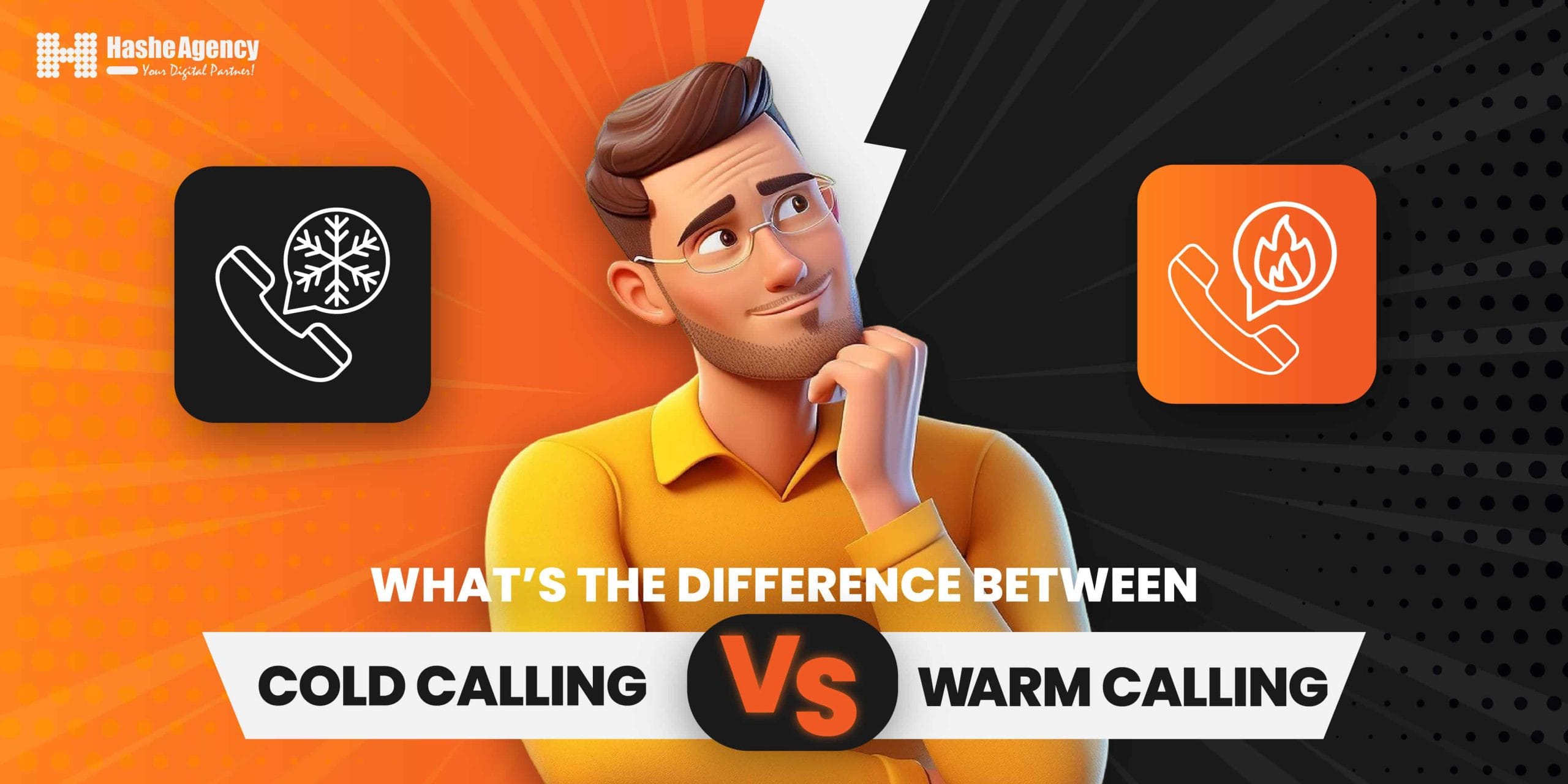It is very crucial to determine the difference between Cold vs Warm calling, in the prevailing B2B and B2C sales this question plays its vital role. Some of the businesses highly rely on and follow cold calling whereas the others chose to build prior communication and connection.
There are high chances that interested customers may not answer to cold calling,there are several reasons behind this fact the major one is scam calling or phishing. Phishing is common these days that’s why mostly tentative clients register their numbers as the DNC.
Cold Calling is the traditional sales approach that has been losing ground in recent years. Not only is it widely disliked (with 63% of salespeople citing it as the worst part of their job) but it’s also becoming less effective in a digital-first world. Cold calls involve no prior contact or interest from the recipient, making rejection rates high and conversions low.
On the other hand, Warm Calling is based on prior interactions or demonstrated interest meaning the recipient already knows your brand, has engaged with your content or has shown some level of intent. This makes the sales process smoother and more efficient. The more informed and engaged a lead is before a call, the better the conversation and the higher the chances of conversion. That’s why integrated marketing and sales efforts are no longer optional, they’re essential for success.
The far more reasonable approach is warm calling but that does not mean that cold calling is off the charts, cold calling is still the approach used by various companies. The question arises here is what is the difference between cold calling and warm calling and what are the possible pros and cons of them? Both warm and cold calling have their place in the sales cycle, depending on the product, industry, and urgency. However, understanding their core differences and when to use each is vital. So, let’s explore what is warm calling, what is cold calling, and how hot calls fit into this equation.
What Is Cold Calling?
Cold calling refers to contacting potential customers who have had no prior interaction with your company or expressed interest in your offerings. It’s a numbers game.The volume of calls are higher but the rate of conversions is very low, time taking and difficult.
Pros of Cold Calling
- Fast outreach: It allows sales teams to reach out to a large pool of prospects quickly.
- Direct engagement: It provides instant feedback and an opportunity to pitch immediately.
- Useful for market testing: It can help test scripts or introduce new products.
Cons of Cold Calling
- Low conversion rates: Most recipients are uninterested or annoyed, leading to quick hang-ups.
- High rejection: It can be demoralizing for sales reps.
- Not scalable long-term: It requires constant effort without guaranteed results.
Cold calling remains a useful strategy for brand-new startups with limited leads or industries where phone outreach is still the norm. However its effectiveness has declined sharply as consumer awareness and digital literacy have increased..
What Is Warm Calling?
Now let’s look at the meaning of warm calling in practical terms. A warm call happens when the recipient has had some form of contact with your business. This could be as simple as downloading an eBook, following your company on LinkedIn, attending a webinar or responding to an email campaign.
Pros of Warm Calling
- Higher response rate: Since the prospect is already familiar with your brand, they are more receptive.
- Less resistance: Calls are more like conversations than hard pitches.
- Easier to personalize: You have data on the lead’s preferences and behaviors.
Cons of Warm Calling
- Requires setup: It depends heavily on strong marketing to generate awareness and interest.
- Timing is critical: Too soon and the prospect may not be ready, too late and they might forget you.
- Not always scalable: Depending on the inbound flow, volume can be limited and lead generation can be a difficult task to manage.
Warm calling is often used by companies with a mature lead nurturing system in place. It is particularly effective when paired with CRM tools and lead scoring systems to prioritize the most interested prospects.
So, What Is a Hot Call?
If cold calling is starting from scratch and warm calling is a heads up, then hot calling is your golden moment.
A hot call is when a prospect is actively looking to make a purchase or decision. They’ve often requested a demo, asked for pricing or filled out a contact form. This is the ideal sales opportunity.
Characteristics of a Hot Call:
- The prospect is already sales-qualified.
- They often initiate the call or request.
- Minimal persuasion is needed which is only clarification and trust.
While hot calls are every sales team’s dream, they don’t happen by accident. They are the product of well-coordinated marketing campaigns, brand presence and user experience. Therefore, hot calls are rare but extremely valuable.
Which Approach Is Right for Your Business?
Deciding whether to use cold or warm calling depends on several factors which include your target audience, sales goals, product complexity, and available resources.
- For startups or companies breaking into new markets, cold calling might offer immediate but limited visibility.
- For established brands with good web traffic, social media presence, or email subscribers, warm calling will yield better results.
- For high-ticket or B2B services, where decision-making is slow, warm and hot calls are far more productive than blind cold calls.
At Hashe Agency, we focus on building warm pipelines through strategic digital marketing ensuring that every lead your sales team contacts already knows who you are and why you matter. This not only saves time but increases your ROI and improves your team’s morale.
Final Thoughts
Understanding the difference between cold, warm, and hot calls empowers your team to reach the right people at the right time. While cold calling has its place, it’s often inefficient in modern B2B environments. Warm calling, on the other hand, nurtures relationships and converts prospects more naturally. And hot calls when executed well can fast-track your sales cycle.
If you’ve been wondering what is the difference between a hot call and a cold call, the answer lies in preparation, marketing, and timing. Want to build more hot and warm leads? Let Hashe Agency’s digital marketing team help you warm up your outreach before the phone even rings.





